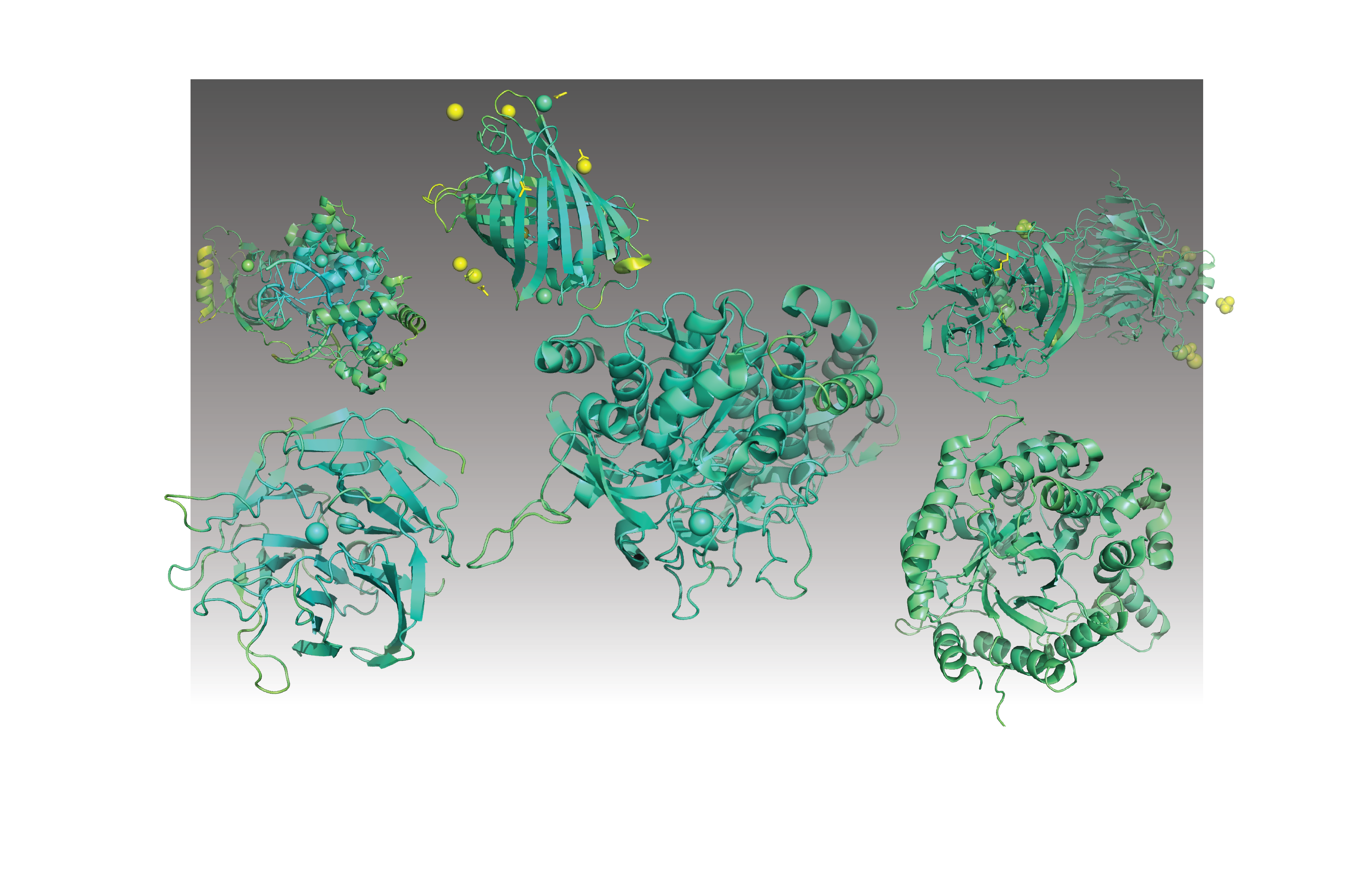Research Overview
The Siegel Lab develops novel enzyme catalysts through a combination of dry-lab computational tools coupled with wet-lab genetic, microbiological, and analytical chemical methods. The general workflow follows the Design-Build-Test cycle. Design: Computational tools are used and developed to model to predict optimal protein sequence and structures that are hypothesized to enable catalysis. Build: Genes that encode the design protein sequences are synthesized, and their corresponding protein products are produced. Test: We use a combination of analytical chemistry techniques (e.g. fluorescence and absorbance spectrophotometry, liquid and gas chromatography, mass spectrometry, and NMR) to characterize the functionality of the computationally designed enzymes. In some cases, the proteins will be purified for in vitro kinetic characterization. In other cases, we will build in vivo systems to determine titer, productivity, and yield. This is done both on our own and in collaboration with groups around the world.
Unlocking the Hidden Potential of Our Food System
Due to the incredible advances in computational, genetic, and analytical technologies we have a unique opportunity to transform our food system to enable safe, sustainable, and secure nutrition for all. While personalized nutrition that maximizes natural resource utilization and human health outcomes is not a new goal, the ability to achieve this goal is finally possible. In the Siegel lab we are utilizing computational, genetic, and analytical technologies to discover and design enzymes that unlock the hidden potential of our food system. Through these efforts we aim to deliver unprecedented nutritional benefits from the foods we eat, while minimizing the resources needed for production, and without requiring us to move away from the foods we love that often define our cultural heritage and identity.
Next Generation Therapeutics
Proteins are the fastest growing sector of therapeutics. We plan to generate next generation protein therapies by developing enzyme catalysts with highly targeted functions. This will enable highly specific molecular reactions to be catalyzed in the human body with minimal side effects. We will focus on developing novel protein therapeutics that could potentially enable novel treatments for cancer, autoimmune disorders, diabetes, and obesity.
Renewable Fuels and Chemicals
A large fraction of today's oil goes towards long range transportation and chemicals used for making materials. These products are unlikely to be replaced by batteries. While oil naturally forms of millions of years, it would be ideal to design catalysts to rapidly produce specific components of oil. However, for most of the desired chemical compounds there is no natural transformation route from readily available renewable feedstocks into high-value petrochemicals (except for time, heat, and pressure, from which product mixes are made).
One possible route to address these challenges is the application of biotechnology to engineer systems for the production of fuels, materials, and the conversion of carbon dioxide into value-added products. Current efforts have primarily focused on combining several existing biological parts, however there are many products and routes that will be inaccessible if limited solely to naturally occurring parts. Therefore, the development of biological systems to produce products not found in nature will require the design of parts with novel functions.
Waste Remediation
Modern society has produced many chemicals that enable us to control the environment around us. Some examples of these chemicals are herbicides and nerve agents. When these chemicals are used however a significant amount of waste and environmental contamination is produced and is difficult to neutralize. Therefore, we plan to develop enzymes that can be applied to effected areas and neutralize the chemicals. As enzymes are made of amino acids, they pose minimal risk to the environment and will be readily integrated into the natural carbon cycle.
Development of Next Generation Computational Design Methods
We are deeply interested in further developing computational methods that integrate modern molecular modeling tools with human knowledge and empirically generated data. This ranges from developing large data sets of biophysically characterized enzyme variants to train new data-driven design algorithms, to exploring how to utilize and effectively search for a function of interest within the massive protein sequence databases (180-million sequences and growing) now available, to integrating what we know about enzyme chemistry into molecular modeling pipelines to create the atomically accurate structures needed for design efforts. Through the use and development of these new tools and methods we can increase the chances of success in our applied efforts (e.g. unlocking the hidden potential of our food system).

